ASTRONONOMY 1015: TELESCOPE IMAGES
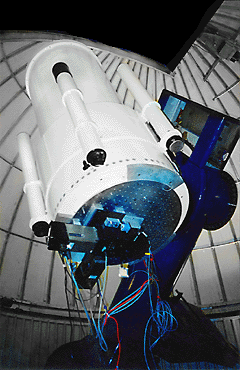
East Tennessee State University is one of
the five Universities
in the
Southeastern Association for
Research in Astronomy (SARA), which operates
this 0.9 meter (36 inch) telescope at Kitt Peak
in Arizona.
The SARA telescope is often operated
remotely from the eastern US.

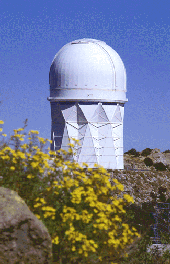
Kitt Peak contains
a large number of telescopes,
in addition to the SARA telescope.
Most of these telescopes are operated
by the
National Optical Astronomical
Observatories (NOAO), a public facility for
professional astronomers from
all over the US.
The telescope shown on the right is the Kitt Peak
4m telescope.
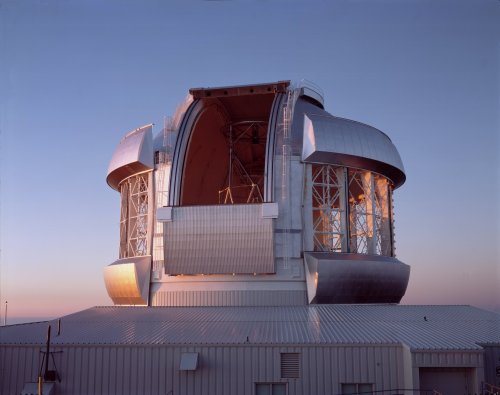
This is the brand new 8.1m
Gemini
North
telescope built by the US (NOAO),
in collaboration with
the United Kingdom, Canada, Chile, Australia,
Argentina, and Brazil.
It is located on Mauna Kea, in Hawaii.
It was dedicated in June 1999, and
is expected to begin general observations
in June 2000.
The matching Gemini South 8.1m telescope
is being built on Cerro Pachon in central Chile,
and is expected to be ready in 2000.

The Gemini mirror.
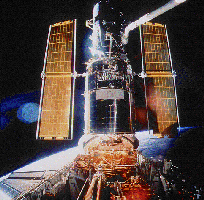
The
Hubble Space Telescope
has a 2.4 meter mirror, and
has instruments that operate at
ultraviolet,
optical,
and
infrared
wavelengths.

The
National
Radio Astronomy Observatory
100 meter telescope
is currently being constructed
in Green Bank, West Virginia.
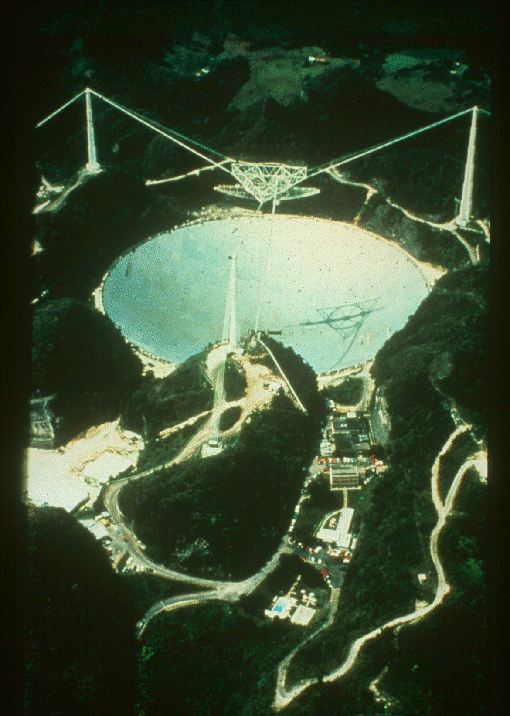
The 300 meter
Arecibo radio telescope,
in Puerto Rico.
It is built into a valley, and is not
steerable.

The
Very Large Array
in New Mexico:
a collection of 27 radio telescopes, each
with diameters of 25 meters,
covering up to 22 miles.
Working together, these provide very high resolution.

The Terrestrial Planet Finder Telescope
a planned NASA infrared interferometer,
designed to find Earth-like planets
around other stars.
It is expected to be launched in 2011.
Current plans
are that this observatory will
have four 8.5 meter telescopes, operating together,
spread out over a distance
of 1000 meters.
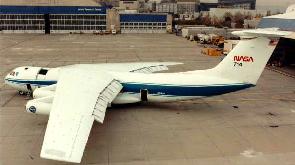
The
Kuiper Airborne Observatory.
A Lockheed C-141 aircraft which carried
a 0.9 meter optical/infrared telescope.
This observatory was run by NASA, and
operated from 1974 - 1995.
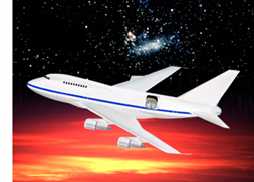
The
Stratospheric
Observatory for Infrared Astronomy (SOFIA).
A planned 2.5 meter telescope to
be housed in a Boeing 747-SP aircraft.
This telescope will begin operations
in the year 2001. It is a collaborative project
between the US (NASA) and Germany.

The transparency
of the Earth's atmosphere at different
wavelengths. In Gamma rays, X-rays, and ultraviolet,
nearly all the light is blocked by
the Earth's atmosphere. At only certain
infrared wavelengths does light get through
the Earth's atmosphere.
At radio waves, the atmosphere is transparent,
except at wavelengths longer than 100 meters.
This diagram is from the textbook used for this
class,
`Universe: Origins and Evolution',
by
T. Snow and K. Brownberger.
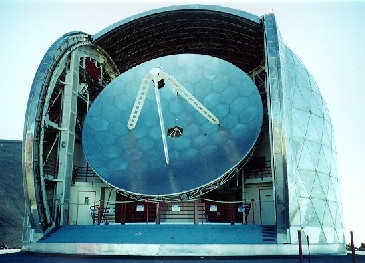
The 10.4 meter
Caltech Submillimeter Observatory (CSO).
Submillimeter wavelengths are at long wavelength
edge of the infrared regime.
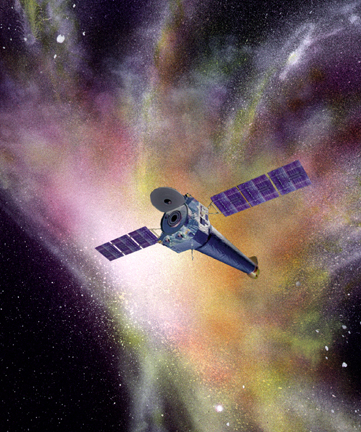
The
Chandra X-ray telescope, launched
the summer of 1999. This telescope
was formerly known as the Advanced X-Ray Astrophysics
Facility (AXAF).

The design
of the Chandra telescope.
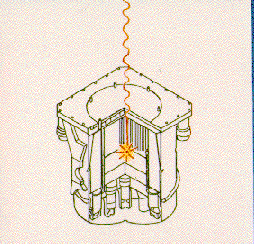
A schematic diagram of one of the gamma-ray
detectors on the
Compton Gamma Ray Observatory.

The
Compton Gamma Ray Observatory.
This was launched
in
1991 and is currently
operating.

















